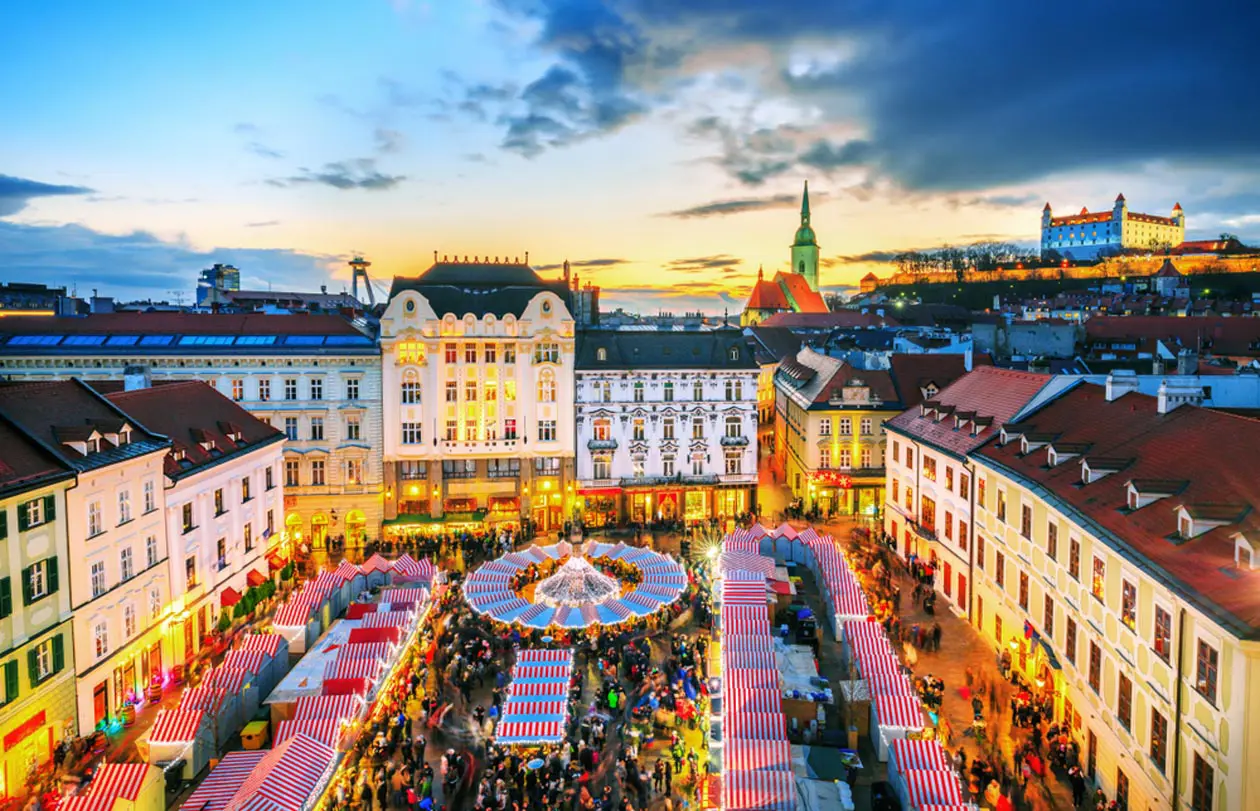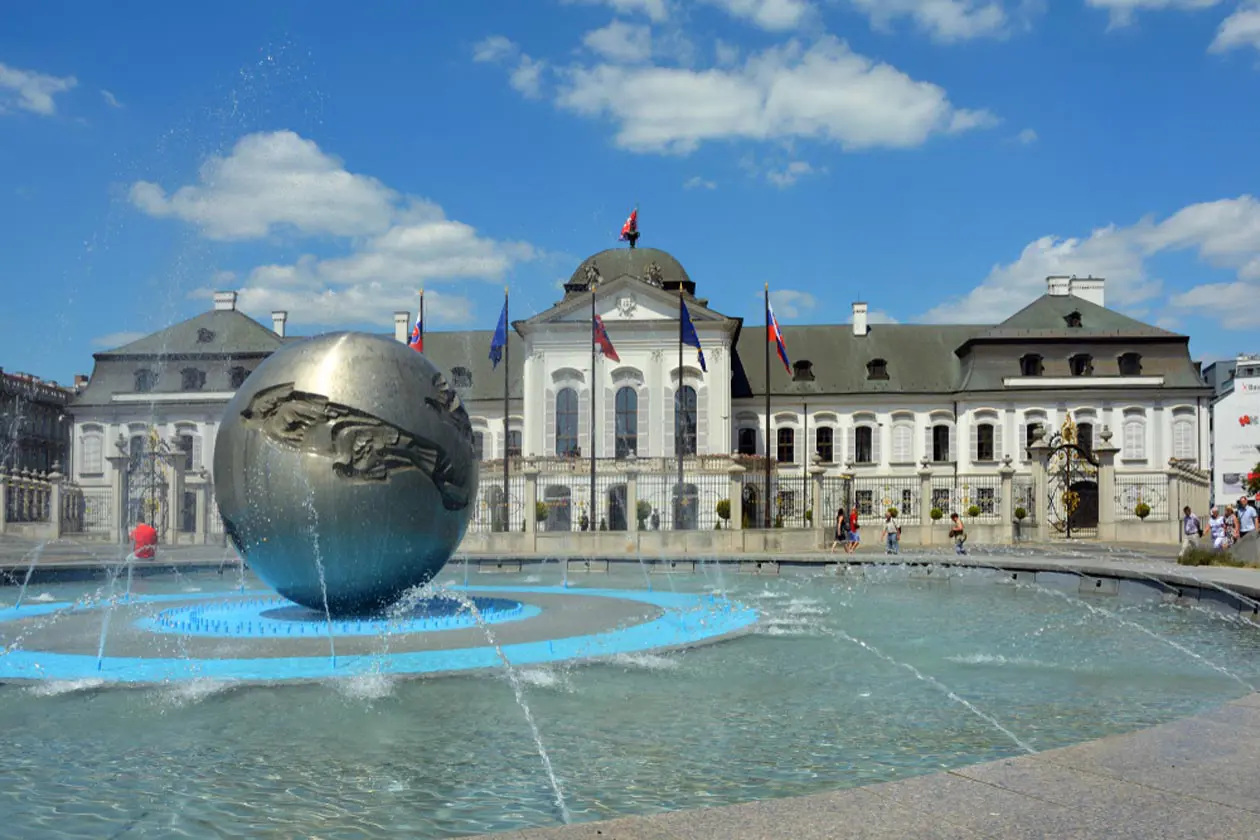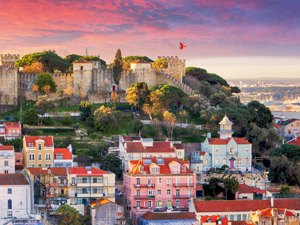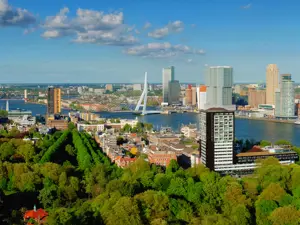Capital city, economic and cultural centre of Slovakia
Bratislava is a wonderful city waiting to be explored. Established at the crossroads between the Amber Road, which connected the Baltic Sea to the Mediterranean, and the Danube waterway, which extended from Eastern Europe to the West, Bratislava has been inhabited by the Celts, Romans and Germanic and Slavic tribes, and was the capital of the Kingdom of Hungary between 1526 and 1784. Since 1st January 1993 Bratislava has been capital of Slovakia and, bordering Austria and Hungary, enjoys a unique position in the heart of Europe.
Michael’s Gate, of Gothic origin, is today the only one of four access gates into the well-preserved medieval fortified city. A tower of 51 metres topped with a statue of St. Michael, which gives the gate its name, sits on its summit. The tower is home to the city museum and exhibits an interesting collection of medieval weapons. Within the walls of the city, near Michael’s Gate, the narrowest house in Bratislava can be found, the front of which measures only 160 cm, whilst in Michael’s Tower the so-called “Zero Point” is located, which indicates the distance of the main European capitals from Bratislava. Vienna, for example, is only 60 km from the city.
Primate's Palace of Bratislava
In Primate’s Square, in the dead centre, the most interesting building is without doubt Primate’s Palace, an imposing pink building considered one of Bratislava’s architectural gems. The interior rooms of the building are used today by the Mayor of Bratislava and as showrooms for the world’s most comprehensive collection of tapestries, which were manufactured in England in the seventeenth-century.

Primate's Palace of Bratislava. Photo: Sisiterscom.com, Shutterstock
The Main Square is the epicentre of social life in Bratislava and in late summer afternoons a laser show is projected onto the Clock Tower of Bratislava Town Hall, a stone building dating back to the fifteenth-century and home to a permanent exposition dedicated to the city’s history.
St. Martin Cathedral of Bratislava
St. Martin’s Cathedral bears the name of the Saint and is home to the bronze statue by G.R. Donner which represents him as a Hungarian knight on horseback, cutting his cloak with his sword in order to share it with a beggar. From the sixteenth to the eighteenth-century, 11 Hungarian rulers were crowned in the cathedral. A 300 kg replica of St. Stephen’s crown is perched at the top of the 85 metre-high Cathedral tower.
Grassalkovich Palace in Bratislava
Grassalkovich Palace, built in the eighteenth-century, was the summer residence of the count and the centre of the social life of that era. It has been subjected to much renovation work over the years and is today the residence of the President of the Republic. The splendid park that surrounds the palace is the most beautiful in Bratislava and as well as its historical sculptures - like the equestrian statue of Queen Maria Theresa for example - artworks at the forefront of modern art can be admired.
Bratislava Castle
Bratislava Castle, built on a rocky hill overlooking the Danube, dominates the city with its silhouette. Built in the tenth-century, it has been modified, rebuilt, destroyed and then rebuilt again. In 1811, a terrible fire broke out, caused by the carelessness of Napoleonic soldiers, which completely destroyed the castle and for the following 150 years only its ruins dominated the city. Today it is home to the Slovak National Museum.
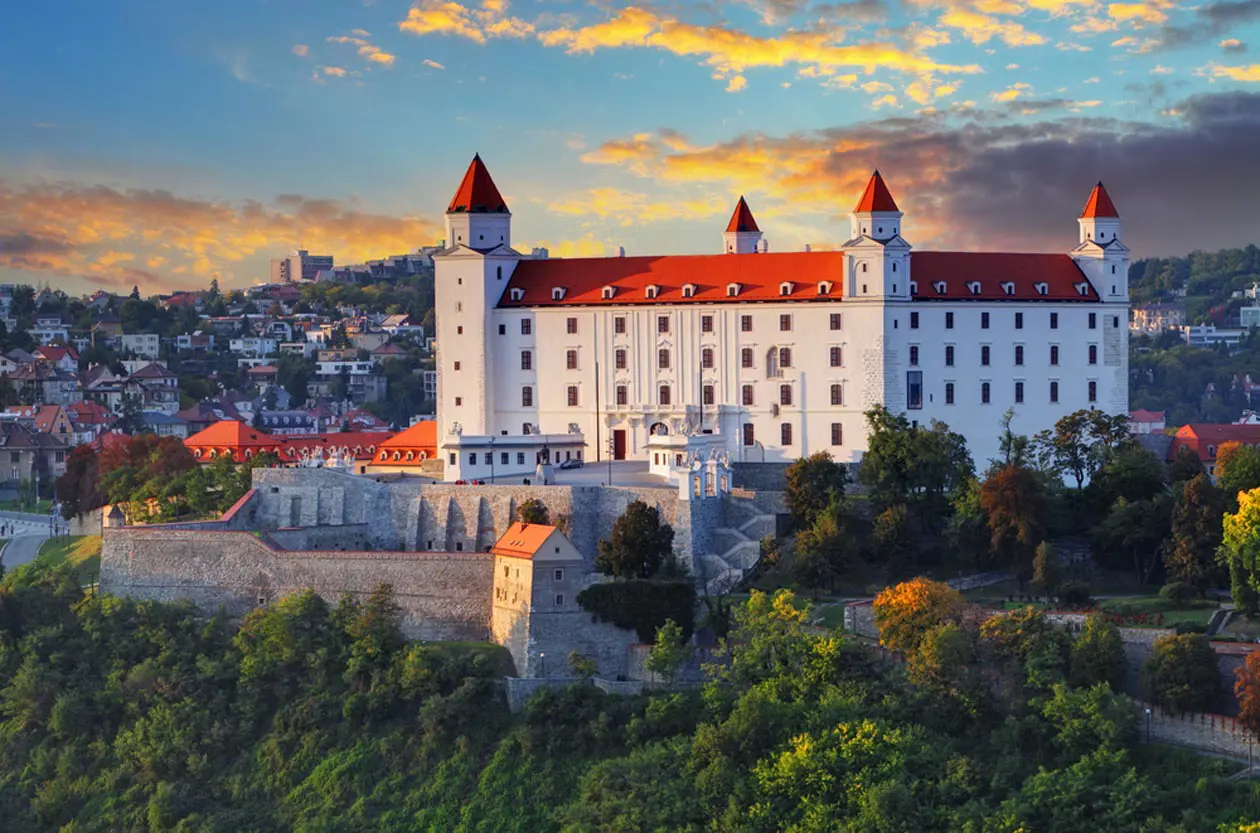
Bratislava Castle. Photo: Sisiterscom.com, Shutterstock
Nový Most bridge of Bratislava
The old town of Bratislava, connected to the new town by the Nový Most (new bridge), is renowned for its disk, named “UFO”, inside which a restaurant and a skybar can be found, and where a splendid panorama of the Danube can be enjoyed.
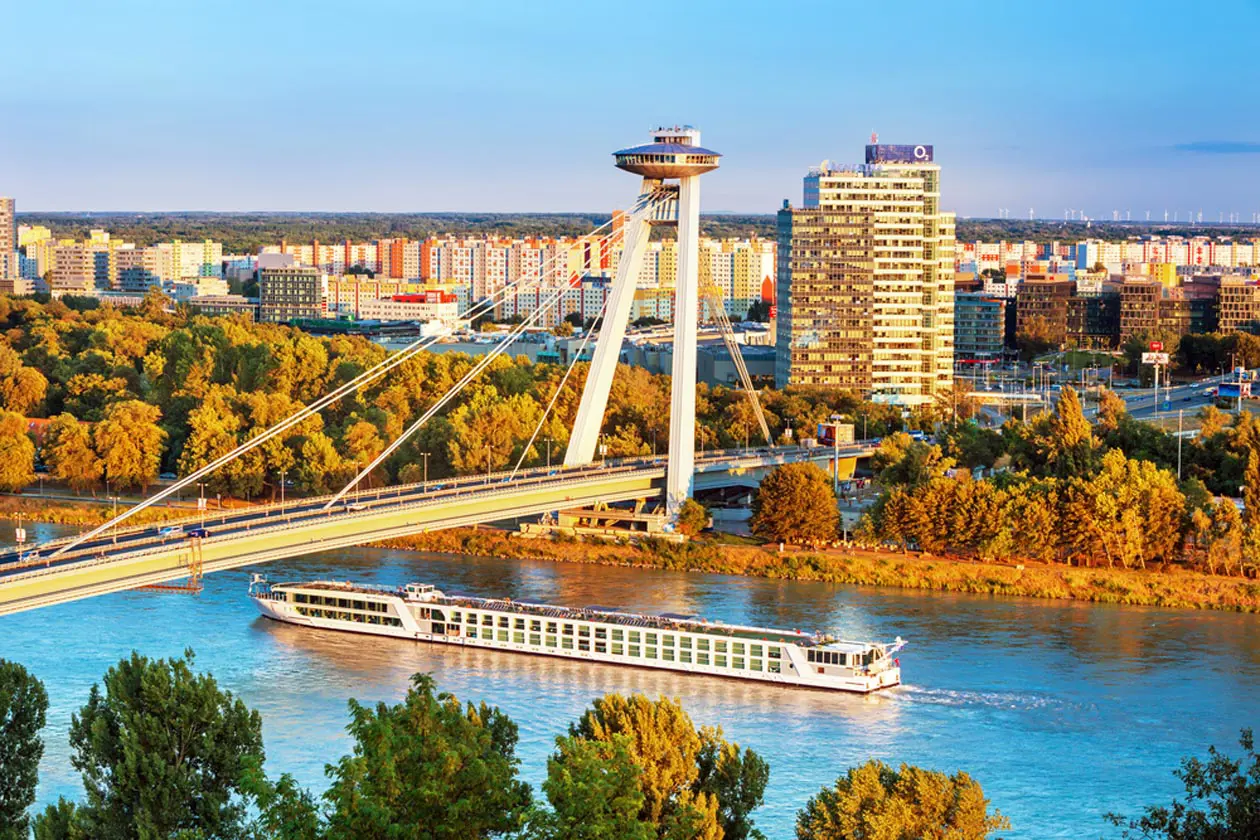
Nový Most bridge of Bratislava. Photo: Sisiterscom.com, Shutterstock
With important historical and cultural treasures, Bratislava today is also a modern metropolis, open to Europe and the world, which is visited by a large number of people, attracted by the fact that it is a small convenient city, and to its vibrant social life, historical charm and latest trends. It is one of the youngest capitals in the world with an equally young population. Palaces, shops, shopping centres, charcuterie, friendly people, international cultural or sporting events, exhibitions and business opportunities are a few of the reasons to visit the city.
Text by Alisè Vitri
Video: www.visitbratislava.com
Tourism Board
www.visit.bratislava.sk
Partnership with GetYourGuide
Where to sleep in Bratislava

Bratislava. Photo: Sisiterscom.com, Shutterstock
Bratislava is a welcoming city and offers different possibilities for accommodation.
To find the ideal hotel and the best offers you can do a search for the stars but also for districts or landmarks.
DISTRICTS
Hotels in districts
LANDMARKS
Hotels in tourist area
where to go in bratislava
Monuments in Bratislava

Photo: Sisiterscom.com, Shutterstock
BRATISLAVA CASTLE
Located on a hill above the old town, Bratislava Castle overlooks the city of Bratislava. The hill on which the castle sits was populated from the beginning of the late Stone Age and its first inhabitants were Celts who founded a fortified settlement called “Oppidum”. During the course of history it underwent different changes; in the sixteenth-century, King Ferdinand ordered the construction of the castle in Renaissance style and in the seventeenth-century it was rebuilt in Baroque style. In later years it served as the representative location for the Slovak Parliament, whilst today it houses the National Museum of Slovakia.

Photo: Sisiterscom.com, Shutterstock
CATHEDRAL OF SAINT MARTIN
The Cathedral of St. Martin in Bratislava is a Gothic cathedral with three naves that was built in the fifteenth-century on the ruins of a Romanesque church. The present church was consecrated in 1452. Its interior is very large and a golden copy of the crown of St. Stephen of Hungary (Hungarian King) weighing 300 kg is perched at the top of the 85 metre tall tower, a symbol of the coronations that took place in the cathedral between 1563 and 1830.

Photo: Sisiterscom.com, Shutterstock
GRASSALKOVICHOV PALACE
The Grassalkovichov Palace of Bratislava is a summer residence in a Rococo style was built in 1760 for Count Anton Grassalkovich. The house was a luxurious and sought-after venue for events for the aristocratic society; today however, it is the official residence of the President of the Slovak Republic. A large park with secular trees and fields, open all year, extends to the rear of the building.

Photo: Sisiterscom.com, Shutterstock
OLD TOWN HALL OF BRATISLAVA
The history of the old city’s Town Hall in Bratislava dates back to the thirteenth-century, when the Romanesque house of the mayor became the property of the city. Over the years other extensions have been added with different modifications. The building houses the Museum of the City of Bratislava, and in the summer cultural programmes take place in the Renaissance courtyard.

Photo: Sisiterscom.com, Shutterstock
ST. MICHAEL'S GATE - MICHALSKÁ BRÁNA
St. Michael’s Gate of Bratislava with its copper roof is the symbol of the city. Built in the middle of the fourteenth-century it was modified between 1753 and 1758 into its current Baroque style. The tower has seven floors and from the last one it is possible to admire the panorama of the city’s historic centre.

Photo: Sisiterscom.com, Shutterstock
PRIMATE'S PALACE
The Primate’s Palace of Bratislava (1778 - 1781) was built on property that originally belonged to Archbishop Esztergom. The façade is in a classic style and the building today is home to the city’s mayor. Inside, its Hall of Mirrors is used for concert performances.
Museums in Bratislava
BRATISLAVA CITY MUSEUM
Founded in 1868 and inaugurated with its first exhibition in 1872, the Bratislava City Museum features several buildings. The most important one is inside in the old city’s Town Hall.
The collections housed inside are of all different types: historical, pharmaceutical, decorative arts, archaeological, ethnographic, sculptures, scientific and technological.
ARCHAEOLOGICAL MUSEUM
The Archaeological Museum of Bratislava is a branch of the National Museum of Slovakia and offers a collection of treasures from Slovakia, and many archaeological finds of the past, from the first Stone Age up to the thirteenth-century. It also preserves objects from Egyptian, Greek and Roman territory. The museum is located at the foot of the Bratislava Castle in the 16th-century Kamper Mansion Renaissance building.
Excursions in Bratislava

Photo: Sisiterscom.com, Shutterstock
CRUISES ON THE DANUBE
The Danube River is one of Bratislava’s landmarks. Ferries can be taken for tourist cruises along the river or to reach Vienna. There are different destinations favoured by passengers, from the Devin Castle to the Cunovo museum. A scheduled passenger service, the Twin City Liner, operates a high speed Catamaran, connecting Bratislava and Vienna.

Photo: Sisiterscom.com, Shutterstock
MODRA
Modra is an old royal city, known for centuries for the production of wine and quality ceramics. A tour in Modra offers the chance to taste the best wines of Slovakia, honey and local cuisine. Also admire the beautiful scenery of the Little Carpathians.
Partnership with GetYourGuide
Tours and excursions
You might be interested in
Destinations found in the vicinity
Other destinations
Airports nearby Bratislava

